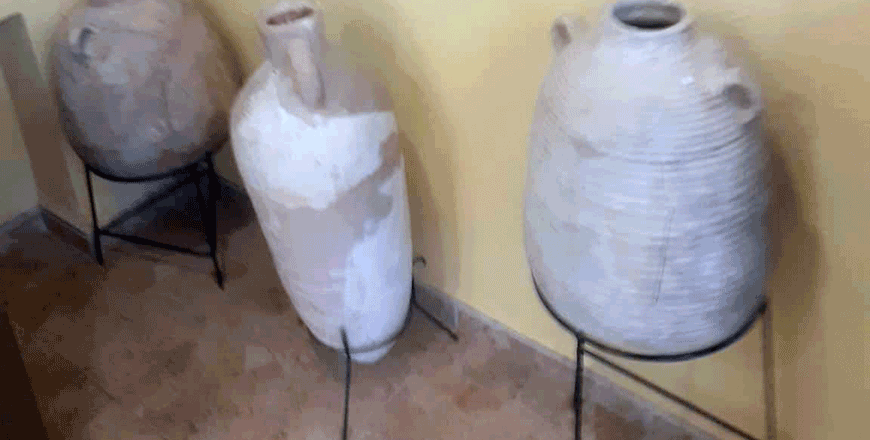You are here
Jordanian scholar calls for creation of Intangible Cultural Heritage committee
By Saeb Rawashdeh - Dec 17,2022 - Last updated at Dec 17,2022

The collection of ancient vessels used for the storage of grain and olive oil displayed at the Archaeology Museum at the University of Jordan (Photo by Saeb Rawashdeh)
AMMAN — The term “cultural heritage” has changed definitions considerably in recent decades, partially owing to the instruments developed by UNESCO, noted a Jordanian professor and expert in cultural history.
“Cultural heritage does not end at monuments and collections of objects,” said Hani Hayajneh in a recent interview with The Jordan Times.
“Cultural heritage also includes traditions or living expressions inherited from our ancestors and passed on to our descendants”, such as oral traditions, performing arts, social practices, rituals, festive events, knowledge and practices concerning nature and the universe or the knowledge and skills to produce traditional crafts, he added.
While fragile, intangible cultural heritage is an important factor in maintaining cultural diversity in the face of globalisation, understanding the intangible cultural heritage of different communities helps intercultural dialogue and encourages mutual respect in other areas of life, Hayajneh said.
“The importance of intangible cultural heritage is not the cultural manifestation itself but rather the wealth of knowledge and skills that are transmitted from one generation to the next, he said.
Recently, Jordan tried to mobilise institutional work through the call to establish a Jordanian Higher National Committee for the Intangible Cultural Heritage (ICH) headed by the minister of culture to draw policies and set strategies related to this sector which aims at promoting awareness of the significance of safeguarding the ICH with the participation of communities, groups and individuals, the professor said. Such a system can help the realisation of a classification system for the ICH on the basis of a shared methodology among stakeholders by taking into account both the well-defined UNESCO cultural policy and its orientation in this field.
“Certain governmental and non-governmental institutions have accomplished some work on the ICH, though much of this work is not organised and is known under different generic names and titles, i.e., folklore, popular heritage etc. Different Intangible Cultural Heritage lists, studies, and treatises on the subject were traced in the history of research on the ICH in Jordan that will remain valuable sources of the country’s Intangible Cultural Heritage and a basis for any future inventory that complies with the UNESCO 2003 Convention for Safeguarding Intangible Cultural Heritage and its Operational Directives,” Hayajneh said.
Moreover, Jordanian universities have established a small number of cultural heritage-related academic programmes. None, however, devote special attention to the ICH, he noted.
Rather, almost all focus on the management, conservation and restoration of tangible cultural heritage, the expert said.
According to Hayajneh, “museums can play an important role in raising awareness about the ICH. However, the handling of the ICH at museums is based on a revision of the concept of cultural heritage which has for some years now been in the process of redefinition at the international level.”
Also communication strategies via the Internet and social networks can be developed, as the web represents an inexhaustible source of information and resources for communication and dissemination, the professor concluded.
Related Articles
AMMAN — Cultural heritage is not limited to monuments and collections of objects, but also includes traditions or living expressions inherit
AMMAN — International agreements to protect and promote intangible cultural heritage (ICH) have only recently become an incentive for Jordan
AMMAN (UNESCO) — Intangible cultural heritage (ICH) is considered an important aspect of Jordanian cultural identity and an essential value



















